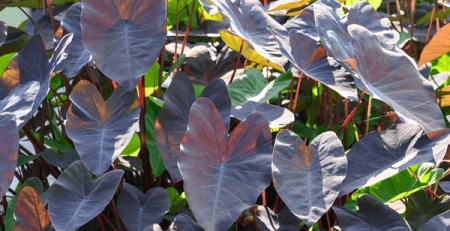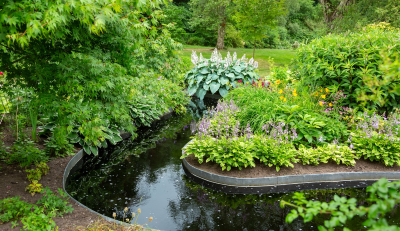Philodendron Deja Vu: A Complete Guide
Introduction
The Philodendron Deja Vu is a unique and stunning plant, beloved by indoor gardeners for its glossy, heart-shaped leaves and ease of care. As part of the large and diverse Philodendron genus, this plant offers a beautiful tropical aesthetic, making it an ideal choice for home decor. Known for its vibrant green foliage, the Philodendron Deja Vu also features slight variations in leaf color as it matures, giving it a dynamic and ever-changing look. This guide will walk you through everything you need to know about growing, caring for, and maintaining this beautiful, low-maintenance houseplant.
The Philodendron Deja Vu is part of the broader Philodendron family, which includes some of the most popular and widely loved houseplants. This variety is known for its lush, attractive leaves, which start as small, bright green hearts and gradually darken and develop a more mature, elegant look as the plant matures. Unlike many other types of houseplants, the Philodendron Deja Vu thrives in low-light conditions, making it ideal for homes or offices with less natural light. This hardy plant can adapt to a wide range of conditions, though it performs best in moderate temperatures, with regular moisture and humidity. Whether you’re an experienced gardener or a beginner, the Philodendron Deja Vu offers an opportunity to enjoy a tropical aesthetic with relatively low maintenance.

Background and Origins of Philodendron Deja Vu
The Philodendron Deja Vu, like many members of the Philodendron family, originates from the tropical rainforests of South America, particularly Colombia. These plants are naturally found climbing the trunks of trees in their native environment, where they thrive in the humid, warm conditions of the forest floor. They’re accustomed to receiving filtered light under the dense canopy of taller trees. In its natural habitat, it grows as an epiphyte, meaning it relies on its surroundings to support it without necessarily taking nutrients from the soil directly. As houseplants, however, they do well in soil that can retain moisture while allowing for good drainage, mimicking their natural growing conditions.
Over the years, the plant has become a popular ornamental plant for its lush foliage and low-maintenance care requirements. It’s an excellent choice for growing indoors, especially in apartments and offices, where its bold, vibrant leaves can bring a sense of tropical beauty to the space.
How to Grow Philodendron Deja Vu from Seeds
Growing the Philodendron Deja Vu from seeds can be a rewarding challenge for experienced gardeners. Here’s a step-by-step guide on how to do it:
- Prepare the Soil: Start with a well-draining potting mix. A mix of peat moss, perlite, and vermiculite works best to mimic the plant’s natural growing environment.
- Sow the Seeds: Sprinkle the seeds on the surface of the soil, pressing them down gently, but don’t cover them entirely. Philodendron seeds need light to germinate.
- Maintain Humidity: Cover the seed tray with a clear plastic dome or plastic wrap to create a humid environment, as humidity helps seeds germinate. Keep the temperature around 70-75°F (21-24°C) for optimal results.
- Watering: Lightly mist the seeds and soil to keep them moist. Avoid over-watering, as too much moisture can lead to mold growth. Ensure that excess water can drain away to prevent root rot.
- Germination: Be patient, as the seeds can take 2-4 weeks to germinate. Once the seedlings appear, remove the cover and move them into indirect light.
- Transplanting: When the seedlings have developed a few leaves, transplant them into individual pots or directly into the garden if the climate allows. Continue caring for them as you would for a mature plant.
Growing Philodendron Deja Vu from seed takes time, but it can be a rewarding process if you’re up for the challenge.
How to Grow Philodendron Deja Vu in Containers
Growing Philodendron Deja Vu in containers is an excellent choice, particularly for those in cooler climates or those with limited space. Here’s how to grow it in a pot:
- Choose the Right Pot: Select a pot that is at least 12 inches in diameter with drainage holes. This allows the roots to spread and ensures proper drainage, which is essential for preventing root rot.
- Use Well-Draining Soil: It prefers a loose, well-draining potting mix. You can use a mix designed for tropical houseplants, or make your own by combining peat, perlite, and pine bark.
- Watering: Water the plant when the top inch of soil is dry to the touch. Be sure not to overwater, as Philodendrons are susceptible to root rot. Always ensure that excess water drains away from the pot.
- Placement: Place your container in bright, indirect light. Philodendron Deja Vu can tolerate lower light levels, but it will grow best with some indirect sunlight.
- Humidity: The plant enjoys high humidity. Mist the leaves regularly, or place a humidity tray beneath the plant to increase moisture in the air around it.
- Fertilizing: During the growing season, fertilize your Philodendron Deja Vu once a month with a balanced liquid fertilizer. Reduce feeding in the winter when the plant is in its dormant phase.
- Repotting: Repot the plant every 1-2 years to refresh the soil and give the roots more space to grow. Choose a pot that is slightly larger than the previous one to accommodate future growth.
How to Care for Philodendron Deja Vu
Caring involves maintaining the right environment and providing proper moisture and light. Here are the essential care guidelines:
- Light: The plant thrives in bright, indirect light but can also tolerate lower light conditions. Too much direct sunlight can scorch the leaves, so always place the plant in a spot with filtered light.
- Watering: Keep the soil evenly moist, but don’t let it stay too soggy. Water when the top 1-2 inches of soil feel dry to the touch. Ensure the pot has good drainage.
- Humidity: This plant loves high humidity. If you live in a dry climate, consider using a humidifier or misting the plant regularly to maintain moisture in the air.
- Temperature: Philodendron Deja Vu prefers warm temperatures between 65°F and 80°F (18°C to 27°C). Avoid exposing it to temperatures below 50°F (10°C).
- Fertilization: Feed the plant once a month with a balanced fertilizer during the growing season. In winter, reduce fertilization to allow the plant to rest.
- Pruning: Trim off dead or yellowing leaves regularly to maintain its appearance. If the plant becomes leggy, prune back the stems to encourage fuller growth.
How to Prune
Pruning is important for keeping it healthy and ensuring it grows in the desired shape. Here’s how to prune:
- Remove Dead or Yellow Leaves: Regularly inspect your plant and remove any yellowing or dead leaves. This helps prevent disease and promotes better airflow around the plant.
- Trim Leggy Growth: If your plant becomes too leggy or overgrown, prune the stems to encourage new growth and a fuller appearance.
- Cut Back for Size: If the plant becomes too large for its space, you can cut back the stems to keep it at a manageable size. Always use clean, sharp scissors or pruning shears to make clean cuts.
Regular pruning helps maintain a neat and healthy plant while encouraging new growth.
How to Landscape
Philodendron Deja Vu can be used in landscaping to add a lush, tropical touch. Here are some ideas for using this plant:
- Indoor Tropical Gardens: Use the Philodendron Deja Vu in an indoor tropical garden, pairing it with other tropical plants like ferns, palms, or bromeliads.
- Ground Cover: In shaded areas of your garden, plant the Philodendron Deja Vu as a ground cover where it can spread out and fill in gaps between other plants.
- Hanging Baskets: In containers, this plant can be trained to trail down, making it ideal for hanging baskets or high planters where the vines can cascade.
Its trailing vines and bold foliage can complement a variety of other plants, making it an excellent addition to many landscapes.
Companion Plants
The Philodendron Deja Vu pairs well with other plants that thrive in similar conditions. Some great companions include:
- Ferns: Ferns like the Boston fern thrive in the same humidity and light conditions and add texture to the landscape.
- Bromeliads: These colorful plants make a stunning contrast with the large, green leaves of the Philodendron Deja Vu.
- Aroids: Other types of aroids, such as the Peace Lily or Spathiphyllum, can be great companions, offering similar growing conditions.
- Calatheas: These plants, with their striking leaf patterns, complement the bold foliage of the Philodendron Deja Vu and thrive in similar conditions.
These plants share similar water, light, and humidity needs, creating a harmonious tropical environment when planted together.
Fun Facts
- Native to South America: Philodendron Deja Vu is native to tropical rainforests in South America, where it thrives under the canopy of tall trees.
- Air Purifying: Like many other Philodendrons, this plant is known for its ability to purify the air by absorbing toxins and releasing oxygen.
- Unique Leaves: The plant’s heart-shaped leaves can grow quite large, up to 12 inches long, with glossy green color and prominent veins.
- Low-Light Tolerant: Unlike many other tropical plants, the Philodendron Deja Vu can tolerate low-light conditions, making it perfect for indoor spaces with limited natural light.
Conclusion
The Philodendron Deja Vu is an exquisite plant that brings a tropical, lush feel to any home or garden. With its large, vibrant leaves and easy care requirements, it’s a perfect choice for both novice and experienced gardeners. Whether you’re growing it from seed, in containers, or as part of a larger garden design, the Philodendron Deja Vu can adapt to various environments. By following the steps outlined in this guide, you can ensure that your plant thrives and flourishes, providing years of beauty and elegance.
For more gardening tips and plant care advice, check out our guides on how to harvest garlic scapes and how to grow basil in a pot.











Leave a Reply